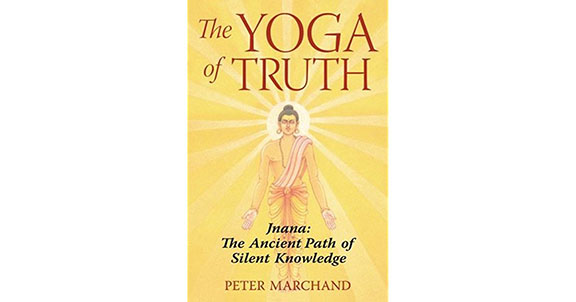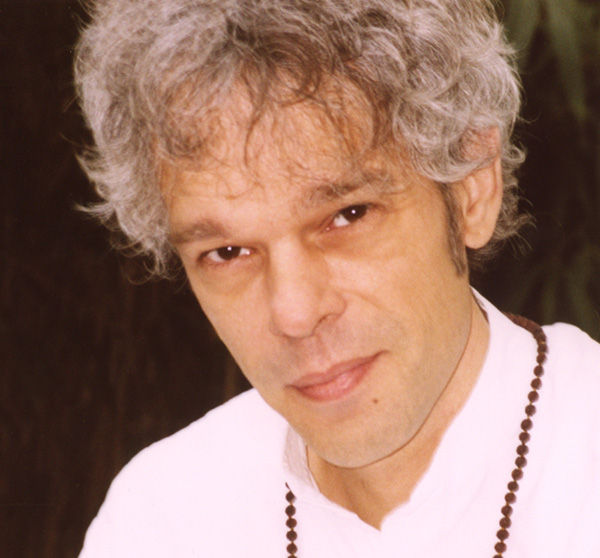 Peter Marchand, a student of the late Harish Johari, was drawn to the study of Jnana Yoga by what he calls his “rational tendencies.” As an environmental engineer and scientist he felt easily attracted to the study of Jnana Yoga. His book, The Yoga of Truth began as an article for an Indian magazine but, as he wrote about the philosophy and practice, the thoughts overflowed and became this book. In this interview he discusses various aspects of the philosophy and practice of Jnana Yoga.
Peter Marchand, a student of the late Harish Johari, was drawn to the study of Jnana Yoga by what he calls his “rational tendencies.” As an environmental engineer and scientist he felt easily attracted to the study of Jnana Yoga. His book, The Yoga of Truth began as an article for an Indian magazine but, as he wrote about the philosophy and practice, the thoughts overflowed and became this book. In this interview he discusses various aspects of the philosophy and practice of Jnana Yoga.
IYM: One theme we are exploring in this issue is the relationship between jnana and bhakti and the other Yoga branches. What is your view?
PM: Bhakti Yoga is sometimes seen as more “emotional” and Jnana Yoga as more difficult for people to understand with its metaphysical underpinnings. That may be so, but the emotions are not where bhakti ends. In the traditional way of Jnana Yoga you begin by rationally deconstructing what makes up your body, mind, intellect and ego. But when that job really is happening, when the sheaths that cover the self become thin, love for the divine in yourself and others comes shining through quite naturally. And it helps to finish the job! Jnana without bhakta is not complete, and vice-versa. Without jnana, the ego turns bhakti into blind faith and we see the results of that everywhere. Without bhakti, jnana becomes dry and intellectual, another ego-game. We have two sides in our brain, one is rational and one emotional. That is the tantric approach. Yoga is union and thus all Yoga is one.
IYM: Why is the principle of nonduality so difficult for some to understand?
PM: Truth is very simple to understand, but hard to accept—that’s why we make it complicated! We are all one and the same. That’s the only truth. All else is just temporary truth. You may think you are a woman and I’m a man—yet those designations last only until we become the same food for fire or worms. And yet, it is not easy to accept the truth that I am not a man.
IYM: Swami Satchidananda taught that all seekers, really all people everywhere, are seeking happiness, and that’s the bottom line for all people.
PM: Yes, it’s true. All the desires we have are desires for happiness. Nobody means to harm others, even if someone behaves inappropriately. That person behaves so only because of the belief that what they are doing will secure their own happiness. Realizing this universal motivation makes it easier to forgive, ignore and forget. If you ask a happy person what he or she desires, the reply will be “Nothing.” Even the desire for enlightenment goes, as it is nothing but a desire for eternal and absolute happiness.
IYM: What practices do you recommend in your book?
PM: If the book can do one thing, I hope it can bring people to meditation. It’s a highway to happiness. Through a variety of techniques one can really learn what it is to be free from thought. It takes time. It doesn’t mean just being without thought, but being without desire. Then, one can really understand who one is, apart from the names and attachments that the ego needs. It becomes a lot easier to just enjoy life as if one is watching a fascinating television show. Without that experience, life can be very challenging. The identification with the body and history of the body through the mind and intellect is a very strong magic that is hard to ignore. In meditation, identification with body, intellect and mind goes—you are without desire—you are free. And then that experience can be used throughout the day. You can go back to it often and so you can watch and enjoy the show but not get involved any more than is required in order to play your role well.
IYM: You give a list of affirmations on which to focus including, “Who is the me that is never changing?”, “I am not this body,” “I am infinite,” “I am, even when not thinking” and so on. How does this work?
PM: The list gives the readers various ideas for contemplation. In the beginning, when people begin to practice Yoga, the concepts they have about themselves or the world have nothing to do with reality. Those concepts need to be replaced with better concepts. That’s where contemplation, affirmations, reading, writing and talking come in. In this way, I hope the book will help people to achieve a simple understanding of the truth. The next step is to forget about those better concepts and allow the truth to be experienced rather than only contemplated. This silent, wordless knowing comes through meditation. Both steps are essential. Many Jnana Yoga teachers focus people on forgetting about all the concepts, because that is the most difficult step. Many people, however, first need to replace the really false concepts. Once your concepts are broad enough to encompass the truth, then you can go beyond. The main task in meditation is to go beyond all concepts.
The point of meditation is not to think, which makes it very different from contemplation. Samadhi is one step beyond dhyana (meditation). When you can be one with that formless being that is your true identity, you no longer identify with your past, your future, your name and form. You are free. The Self is the spark of Cosmic Consciousness sitting in the body. The Self is the way to escape from this illusion, but is itself the first illusion. To get rid of that illusion, of being some thing attached to this body, is samadhi. Samadhi means complete absorption—there is no longer a difference between the witness and the witnessing.
IYM: What is the distinction between meditation, samadhi and enlightenment?
PM: Meditation occurs when you can stop thinking and no longer even require an object on which to concentrate. Samadhi occurs when there is no longer any distinction between the one witnessing and the witnessing itself. In samadhi however, there is still willpower involved. Enlightenment is total, effortless, permanent silence. There is no more identity at all and it happens without any willpower. You can’t do enlightenment—it just happens. The sages say that, for it to happen, you have to be in samadhi for a very long time. Of course, if a person is enlightened, who is left to say, “I am enlightened?” So, enlightenment is a tough concept. The only thing that makes us a little unenlightened is the ego, which is the main concept that must be deleted.
IYM: Do you feel that preparatory practices are needed before one can truly follow the Jnana Yoga path?
PM: Jnanis will often say, “Just keep quiet—inside and out—and it will come.” That’s true, but then their students try and many can’t keep their minds quiet and so they come back for help. Then, you give a mantra and that helps. So, it depends who you are. The technique itself hardly matters—what suits the person at the time is fine—all the rest is about earnestness. Even meditation is not an absolute requirement. It’s great to do asana, pranayama and some serious meditation but, if the rest of the day, you can’t stick to it in a form adapted to life, it’s not very powerful. If you are earnest to live in truth in your daily life, that’s very powerful. That’s 24 hours a day. To practice Jnana Yoga mainly means to not be attached or emotionally “losing it” in your daily life. We have to think, we have to act in our lives, but the task is to always maintain the witness—keep a distance, let it all happen. Yet, for most, some meditation experience is a requirement to just understand this sentence. So in Yoga, there is no duality, only complementary diversity. I agree a lot with the idea of Integral Yoga. If Yoga can’t be integral then what? Yoga is integration.
IYM: In your book you say, “The ego may also seek to strengthen itself through a negative kind of detachment. In this case, it complains about its problems, weakness and enemies, while actually identifying with them, using them to uphold the illusory personality. Thus the ego may even obsessively strive for suffering in a desperate attempt to prove its existence.”
PM: If people are feeling strong, the ego attaches to that strength. If not, the ego also may attach to weakness—the ego will grasp what it can to stay alive. It believes it’s better to cry than to die. The spiritual path is not easy. The ego resists and will come up with all kinds of cleverness. It’s fighting for its life. If people do their practices honestly and consistently, these kind of problems drop away. Karmic problems may be there, but the attitude changes.
IYM: You mention the relationship between karma and sadhana. Would you elaborate?
PM: We all have karmic debts to pay, but, once you are doing serious sadhana, you will view karmic problems as opportunities for improvement. The more you suffer, the more you should feel flattered. Earnestness in sadhana is generated by suffering or compassion. It’s quite easy to say you are happy if you are healthy, problem-free, sitting in Yoga with the eyes closed. But, how do we stay in the state of Yoga when the going gets tough? There’s millions of excuses not to be happy or not to meditate or to be honest or friendly. Action and reaction, desire and aversion—these are the laws of life. We can’t have white without black. Whatever we get attached to brings suffering. In that moment we have the opportunity to suffer or to detach and feel as free as we truly are. The problem holds the solution—the answer is in the question.
About Peter Marchand:
Peter Marchand is one of the founders of Sanatan Society, a networking organization of the family and students of Harish Johari, a tantric scholar, poet, artist and author of many books. Peter lives in Belgium and teaches Rasa Sadhana and Jnana Yoga around the world. He is also the author of The Yoga of the Nine Emotions, which will be featured in the next issue of Integral Yoga Magazine. For more information, visit: yogaoftruth.info.
Source: Integral Yoga Magazine, Fall 2007 issue.


